I still remember the first time I saw a black rose in a garden. It wasn’t mine—it was at a botanical show in Multan about five years ago. I had been gardening for some time, but nothing prepared me for the quiet power of that bloom. It wasn’t pitch black, more like a deep velvety maroon that tricked the eye. Yet, it felt mysterious. Since then, I’ve been obsessed with building my own black rose garden, and honestly, it’s been a mix of trial, triumph, and plenty of thorns—literally.
Why Black Roses Aren’t Truly Black
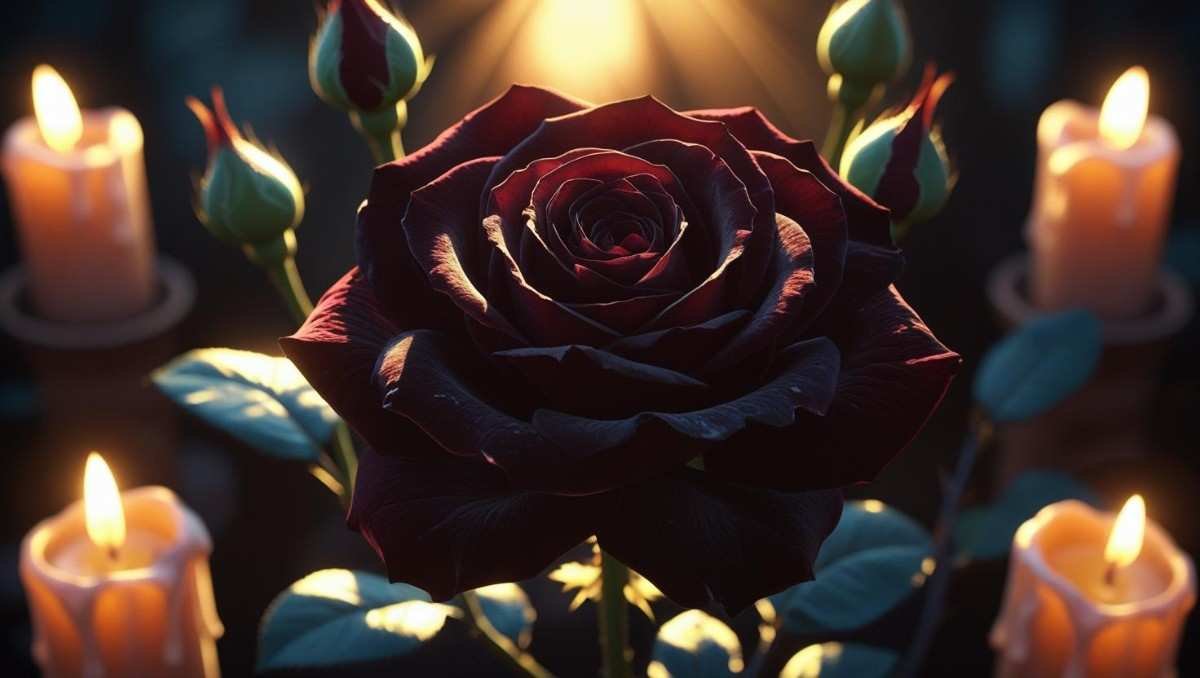
Here’s a truth bomb—black roses don’t really exist in nature. What people call “black roses” are actually very deep shades of red, purple, or maroon. Depending on the light, they look almost black. When I first started planting, I thought I’d find a packet of “pure black rose” seeds online. Spoiler: I got scammed. Twice. That’s when I learned the lesson—building a black rose garden is about embracing illusions, not chasing something nature never made. The beauty lies in perception, not perfection.
The Symbolism Behind a Black Rose Garden

When you plant a black rose garden, you’re not just growing flowers—you’re growing meaning. Black roses symbolize mystery, rebirth, and even strength. Some cultures see them as symbols of farewell, while others take them as signs of bold new beginnings. Personally, I find comfort in their uniqueness. When friends visit my garden, their first reaction is always a mix of awe and curiosity. “Why black?” they ask. My answer is simple: because not everything in life has to be pink or red. Sometimes beauty hides in shadows.
The Practical Challenges of a Black Rose Garden
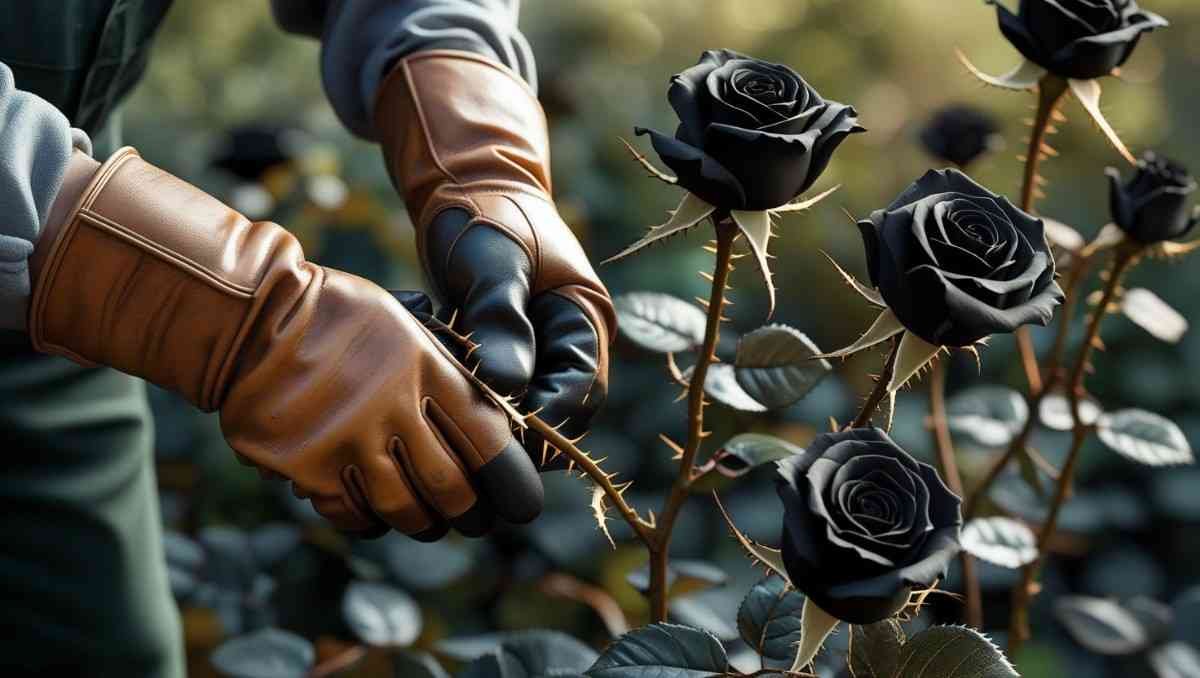
I won’t sugarcoat it—keeping a black rose garden alive and thriving is not for the faint-hearted. Roses in general are divas. They demand attention, regular feeding, and just the right amount of water. Now imagine the “black” varieties that need specific soil pH, good sun, and careful pruning. In my early years, half of my plants turned into crispy sticks in summer. The other half got eaten by pests. Did I cry? Maybe. Did I laugh at my own gardening failures? Absolutely. That’s the beauty of gardening—trial and error, mostly error.
Choosing the Right Varieties for Your Black Rose Garden

Not every rose can be trained into looking black. Some varieties are perfect candidates for a black rose garden. Let me list a few that actually work:
-
Black Baccara Rose – velvety, almost black petals.
-
Black Velvet Rose – dark maroon that looks black at night.
-
Halfeti Rose (Turkish Black Rose) – super rare, found mostly in Turkey.
-
Black Beauty Rose – dramatic and mysterious.
When choosing, go for what’s available in your region. Don’t get trapped by online sellers promising “true black roses.” That’s Photoshop, not botany.
Soil & Sunlight: The Foundation of a Black Rose Garden
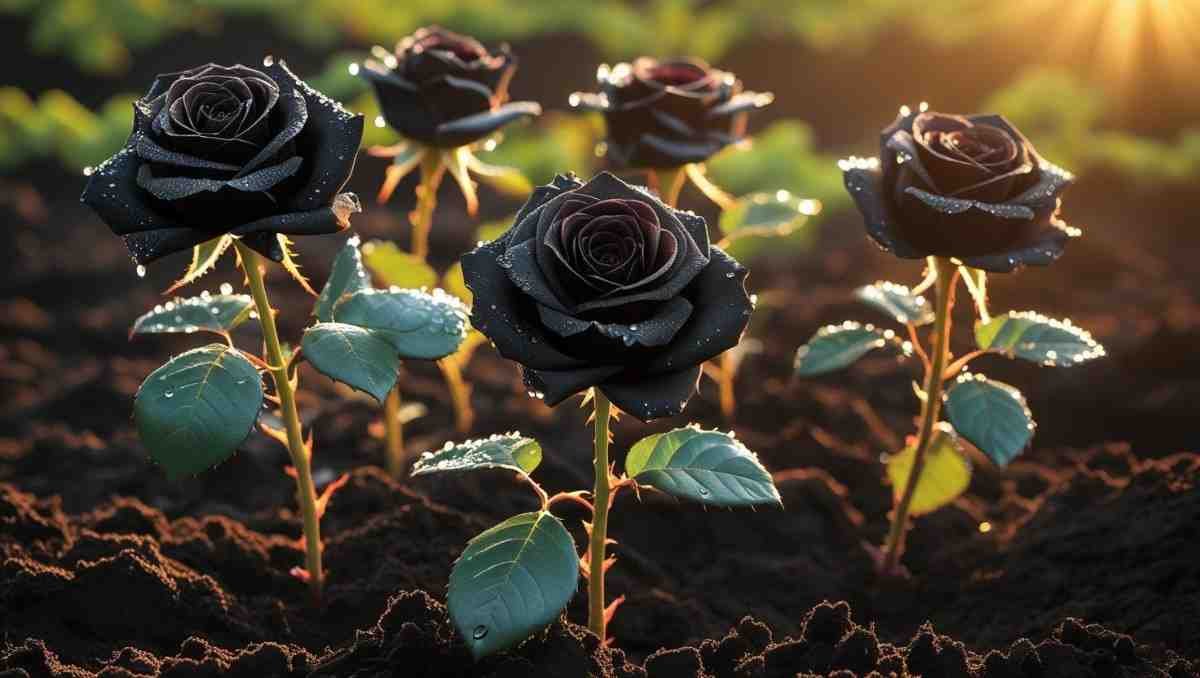
Let’s get practical. A successful black rose garden needs the right foundation. Roses love slightly acidic soil (pH 6.0–6.5). They also want at least six hours of direct sunlight daily. My mistake? Planting them near a wall that blocked light. They sulked. Their colors looked dull, not black. Once I moved them to a brighter spot, they came alive. Lesson? Don’t underestimate light. Also, mulch the soil to retain moisture but avoid waterlogging. Roses hate wet feet. Honestly, who doesn’t?
Watering & Feeding the Dark Beauties
Watering roses is like making tea—too much ruins it, too little leaves it bitter. For a black rose garden, consistency is key. I water deeply twice a week, letting the roots drink instead of just wetting the surface. As for food, roses are heavy eaters. They love nitrogen, phosphorus, and potassium. I usually use a balanced rose fertilizer every month. And trust me, they know when you forget. Their leaves yellow, their blooms sulk, and you feel like a failed plant parent. Been there. Many times.
Pest Control in a Black Rose Garden
Ah yes, the freeloaders. Aphids, spider mites, and beetles love roses almost as much as we do. In my first year of a black rose garden, I was horrified to find my plants covered in green aphids like they were running a tiny insect festival. My solution? Neem oil spray. It’s natural and effective. Sometimes, I also use a mixture of water and dish soap for light infestations. The key is checking your plants regularly. A garden is like a classroom—you ignore it for a week, and chaos takes over.
Designing a Black Rose Garden with Style
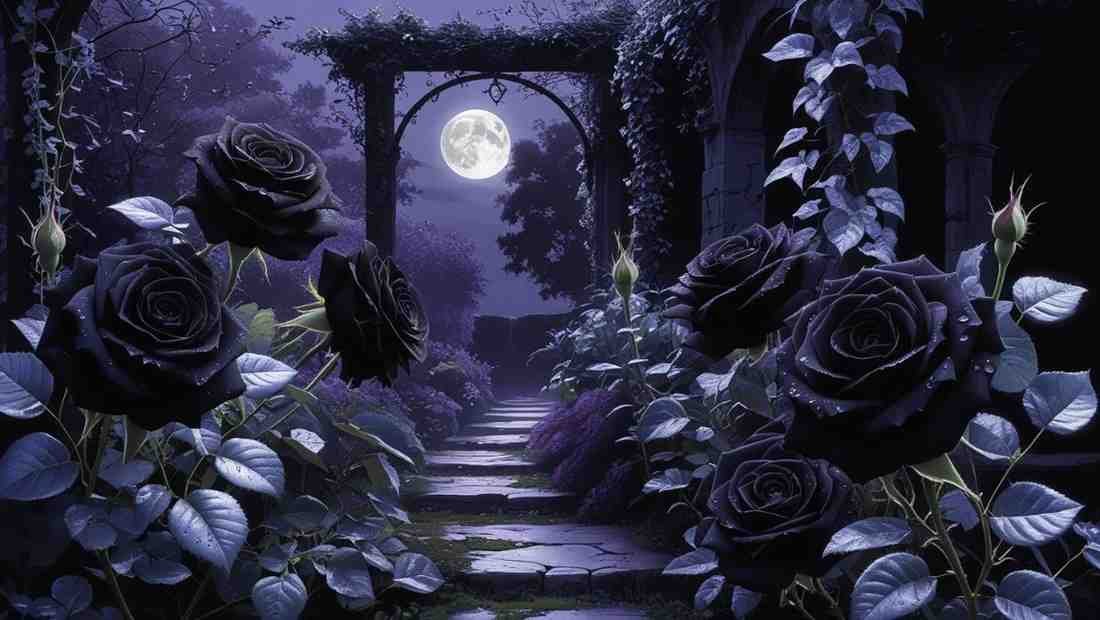
Planting roses is one thing, but designing a black rose garden is an art. Imagine rows of dark roses contrasted with white lilies or silver-leaf plants. The drama is unreal. My favorite combo is black roses with dusty miller—silver-grey foliage that makes the roses pop. You can also line pathways with them, create a gothic centerpiece, or mix with bright reds for a “fire and shadow” theme. Gardening isn’t just about growing—it’s about creating an experience. And trust me, a black rose bed feels like stepping into a fantasy novel.
Common Problems and Quick Fixes
Every black rose garden has its share of problems. Leaves turning yellow? Usually overwatering or lack of nitrogen. Blooms not dark enough? Probably too much shade. Plants dying suddenly? Could be root rot. My quick advice: don’t panic. Gardening teaches patience. Problems are part of the process. One year, almost all my roses looked dull. I thought it was the end. Turns out, they were just adjusting to new soil. The next season? Absolute magic. So breathe. Fix one issue at a time, and your roses will reward you.
Seasonal Care for a Black Rose Garden
A black rose garden changes with the seasons, and you have to change with it. Spring is when everything wakes up—feed your roses well, prune lightly, and watch them burst with energy. Summer? Oh, that’s when roses test your patience. They demand extra water, pest checks, and sometimes a little shade from scorching heat. Autumn is my favorite; blooms deepen in color as the air cools. Winter, though, is nap time. Cut them back, mulch, and let them rest. Think of it like roses going on a spa retreat until spring rings the bell again.
Emotional Lessons from a Black Rose Garden
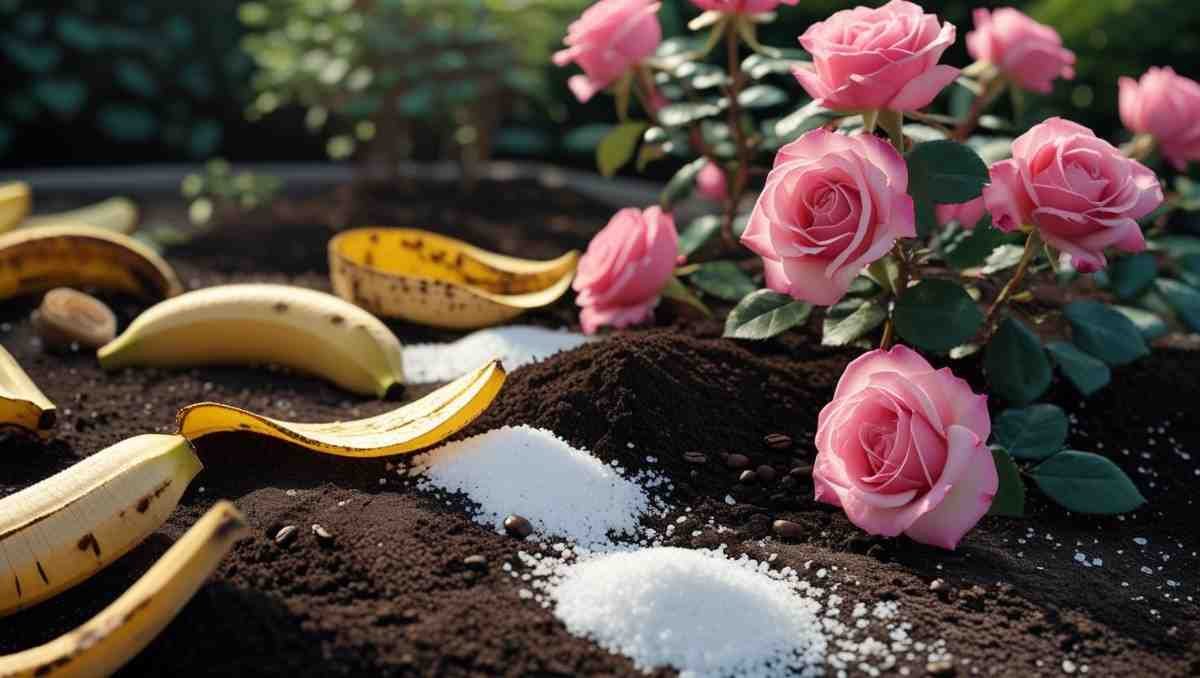
Honestly, my black rose garden has taught me more about patience than any self-help book ever could. You nurture, you fail, you try again. The roses don’t bloom to your schedule; they bloom when they’re ready. And when they finally open, all dark and velvety, you forget the months of frustration. It feels like life itself—messy, slow, unpredictable, yet deeply rewarding. Some people meditate, others do yoga. Me? I stare at my roses and think, “Well, at least one of us looks put together today.” It’s therapy in the form of petals.
DIY Tricks for a Healthier Black Rose Garden
Here are some tricks that worked wonders in my black rose garden:
-
Banana peels: Chop them up and bury near roots. Roses love potassium.
-
Coffee grounds: Mix into soil to maintain acidity and feed plants.
-
Epsom salt spray: Boosts magnesium, gives leaves a lush green look.
-
Pruning shears: Don’t be afraid to cut. More cuts, more blooms.
These aren’t fancy hacks. They’re simple, cheap, and effective. Gardening doesn’t need a science lab—it needs attention, a little creativity, and maybe some humor when your neighbor asks why you’re burying banana peels.
Creating a Black Rose Garden for Small Spaces

Not everyone has acres of land, and that’s fine. A black rose garden can thrive in small spaces too. Balconies, terraces, and even patios can host these beauties in pots or raised beds. Go vertical with trellises or use containers to move them around for the best light. I once grew three black rose bushes on a tiny balcony, and they were the stars of my apartment block. Small gardens teach you to focus on quality instead of quantity. Sometimes, a single dark bloom in a clay pot can outshine a whole bed of ordinary roses.
A Black Rose Garden as a Conversation Starter
Want to impress guests? A black rose garden does it without effort. I’ve had friends and strangers stop in their tracks just to ask if my roses are “real.” Some think they’re dyed, others think they’re fake. Then I take them closer and watch their jaws drop. The garden becomes more than flowers—it’s a conversation, a memory, a story people take home. One time, a guest even compared my roses to “the eyeliner phase we never grew out of.” I took it as a compliment. After all, black roses are a bit of a mood.
Black Rose Garden Mistakes I’ll Never Repeat
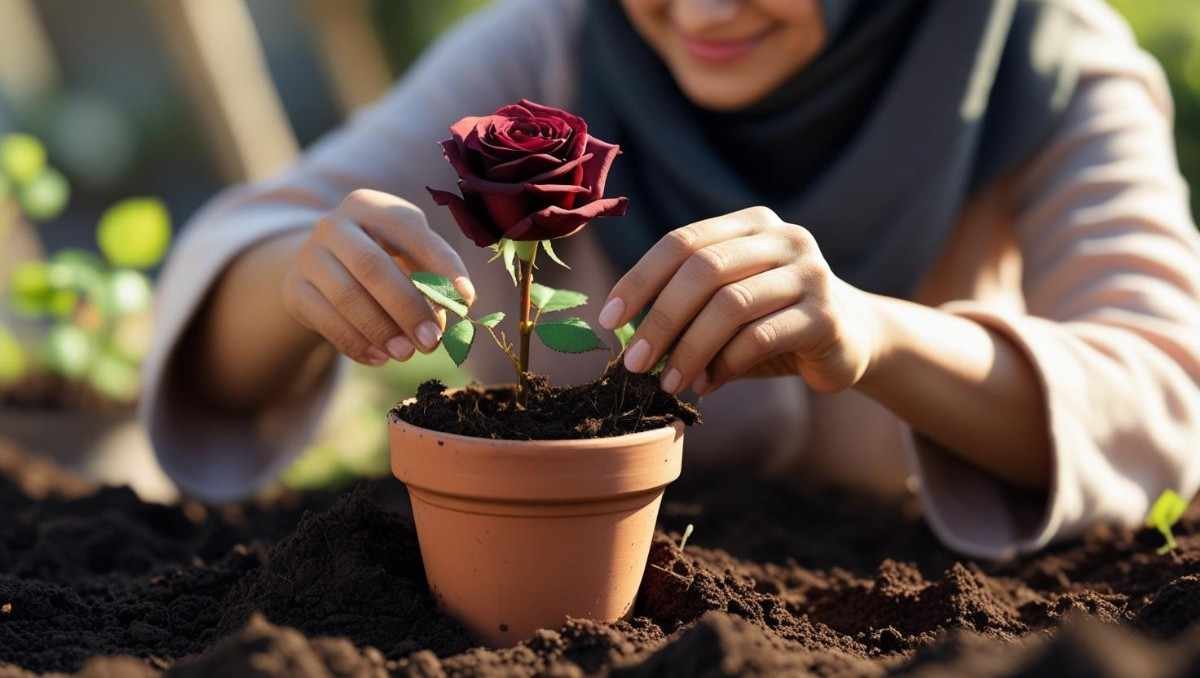
Confession time: I made plenty of mistakes in my black rose garden. I once overfertilized and basically cooked the roots. Another time, I ignored pruning because “they looked fine.” Spoiler—they didn’t bloom that year. My worst mistake? Buying cheap, mislabeled plants from an online seller who shipped me marigolds instead of roses. That was a low point. But every mistake taught me something. Today, my garden thrives not because I’m perfect, but because I learned from being a total disaster in the beginning. And honestly, that’s the real secret to gardening—mess up, then grow.
Advice for Beginners Starting a Black Rose Garden
If you’re dreaming of a black rose garden, here’s my heartfelt advice:
-
Start small—one or two plants.
-
Don’t chase “pure black roses.” They don’t exist.
-
Invest in good soil and sunlight.
-
Be patient; blooms take time.
-
Enjoy the process, not just the flowers.
Remember, you’re not competing with anyone. A single healthy bloom is already a victory. Your roses won’t be perfect every season, and neither will you. And that’s okay. Gardening is about creating joy, not chasing Instagram perfection.
FAQs About Black Rose Garden
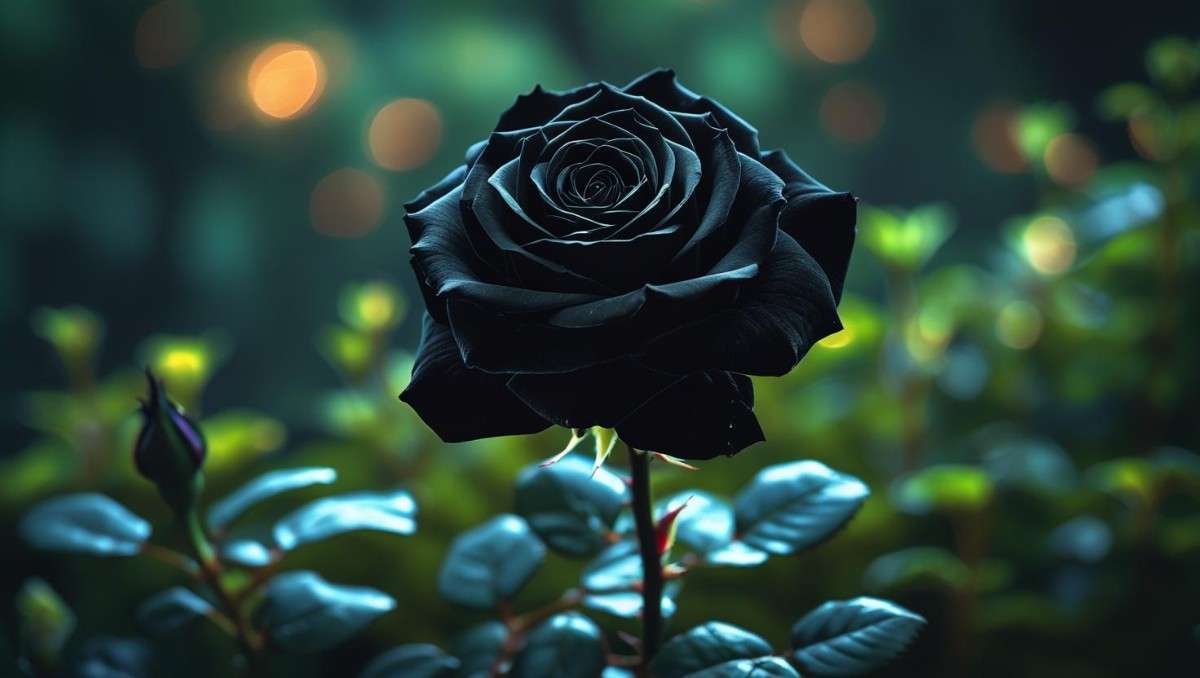
Q1: Do black roses really exist?
Not in pure black form. They’re very dark shades of red or purple that look black.
Q2: Can I grow a black rose garden indoors?
Yes, in pots near windows or under grow lights, but outdoor gardens give better results.
Q3: How often should I water my roses?
Deeply twice a week, depending on climate. Avoid overwatering.
Q4: What’s the rarest black rose?
The Halfeti Rose in Turkey, known for its near-black petals.
Q5: Are black roses hard to maintain?
They’re like regular roses—high maintenance, but worth every second.
A Worldwide Passion for Black Rose Gardens
The beauty of a black rose garden is that it connects gardeners across the world. From Turkey’s Halfeti roses to American backyard hybrids, people everywhere share the same fascination. I’ve joined online forums where gardeners from Japan, Canada, and even South Africa post pictures of their dark blooms. It feels like a secret club, united by shadows and petals. The passion is global, and it proves one thing—gardening isn’t bound by borders. Whether your garden is in Multan or Madrid, the love for black roses speaks the same language.
The Final Bloom: Why Black Rose Gardens Matter
At the end of the day, a black rose garden isn’t just about flowers. It’s about creating something different, something that stands out in a world of sameness. It’s about patience, mystery, and beauty that doesn’t scream—it whispers. Every bloom feels like a reward, every thorn a reminder of effort. My garden may not be perfect, but it’s mine, and it tells my story. If you decide to grow one, don’t just think of it as planting roses. Think of it as planting resilience, elegance, and maybe a little bit of rebellion against ordinary.
for more information homegardeni.com is always available for you